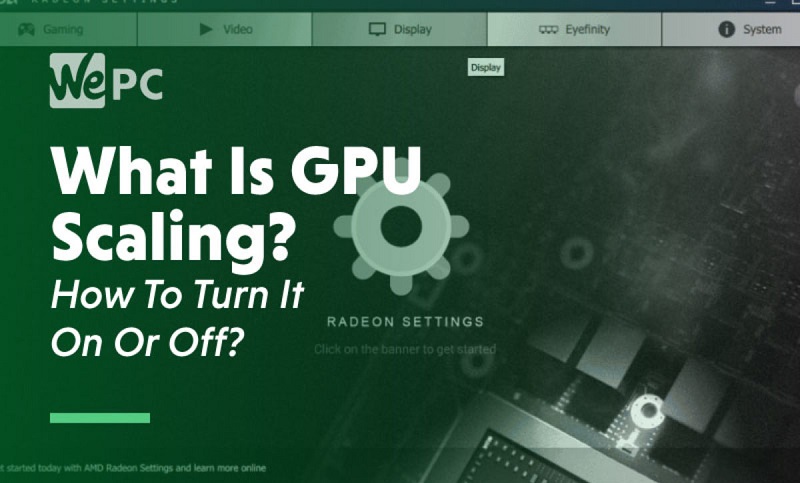Here, most modern games give you the ability to select various screen resolutions to play at them. However, for those looking to run emulators to play older games, or if you are someone then who wants to run an older application, it’s possible for the game or application won’t offer you the ability to choose to run an appropriate resolution at them. We see more on what is GPU scaling in this article.
Look for a piece of information instead of on the multi-GPU performance scaling? Check our guide, SLI vs. Crossfire: Are Multi-GPU Configurations Worth it in 2018?
Many older games like older PC games, NES games, SNES games, etc., were all designed to run on screens with a 4:3 ratio aspect. Here, the modern monitors and displays offer wider screens and typically come in a 16:9 ratio aspect.
Now, you can run into some problems when you try to run those older games and applications designed for a 4:3 ratio aspect. Then, the common problem is that older 4:3 ratio games get stretched to fit on a 16:9 ratio monitor, and, as a result, the game will end up look poor. That’s where GPU scaling comes into it.
How Do GPU Scaling Help Display Older Aspect Ratios?
Here, both AMD and NVIDIA have GPU scaling options through either AMD’s Catalyst Control Center or AMD Radeon or NVIDIA’s Control Panel settings. You should utilize the GPU scaling feature through GPU manufacturers’ control panels to help fix the problem that arises when trying to force a 4:3 or another square-shaped ratio aspect game or application onto a modern widescreen monitor.
Here, the most common option for GPU scaling is forcing to play the game at the native resolution, and the remainder of the screen fills with a black backdrop or a thick black frame either on the sides or around the game, you can add. In this scenario, a 16:9 ratio aspect monitor will create a small 4:3 ratio aspect square in the middle of the display where the game can run as it intended to.
How you can Turn On GPU Scaling With an AMD Graphics Card?
Here, there are two ways to turn on GPU scaling if you have an AMD graphics card:
You can turn on GPU Scaling Through AMD’s Radeon Settings.
- On the desktop, right-click and select AMD Radeon Settings from the menu that pops up.
- Now, click on the Display tab on the menu on the top of the window when the AMD Radeon Settings window opens.
- Then, click on GPU Scaling and switch it to On.
- Finally, choose the Scaling Mode that fits the needs.
You may turn on GPU Scaling Through AMD’s Catalyst Control Center.
- On the desktop, right-click and select AMD Catalyst Control Center from the menu that pops up.
- You can find My Digital Flat Panels on the left-hand sidebar and expand it when Catalyst Control Center opens.
- Then, select Properties (Digital Flat Panel)
- Now, check Enable GPU up-scaling from the Properties (Digital Flat Panel) screen.
- Then, choose the GPU scaling mode that suits the needs.
- Now, hit the Apply button.
How we should Turn On GPU Scaling With an NVIDIA Graphics Card?
Here, you can turn on GPU scaling by doing the following if you have an NVIDIA graphics card:
- You can right-click on the desktop and select NVIDIA Control Panel from the menu that pops up.
- Now, you can click on Adjust desktop size and position underneath the display tab on the left-hand menu when the NVIDIA Control Panel opens.
- In the ‘Adjust desktop size and position options, click the drop-down menu under the ‘Perform scaling on’ button and select GPU.
- From there, select the scaling method and accompanying options that best fit your needs.
You can Also check Askcorran website once for cool articles.
GPU Scaling Vs. Display Scaling:
Here we mentioned before, using GPU scaling can increase input lag. It is not something that you want as it ruins the gaming experience. A solution to this problem is display scaling. Modern monitors can scale images so that the graphics card does not have to.
It does not add input lag and leaves the graphics card out of the equation to pump out several frames as it can without any issues.
It is everything that you need to know about AMD GPU scaling.
